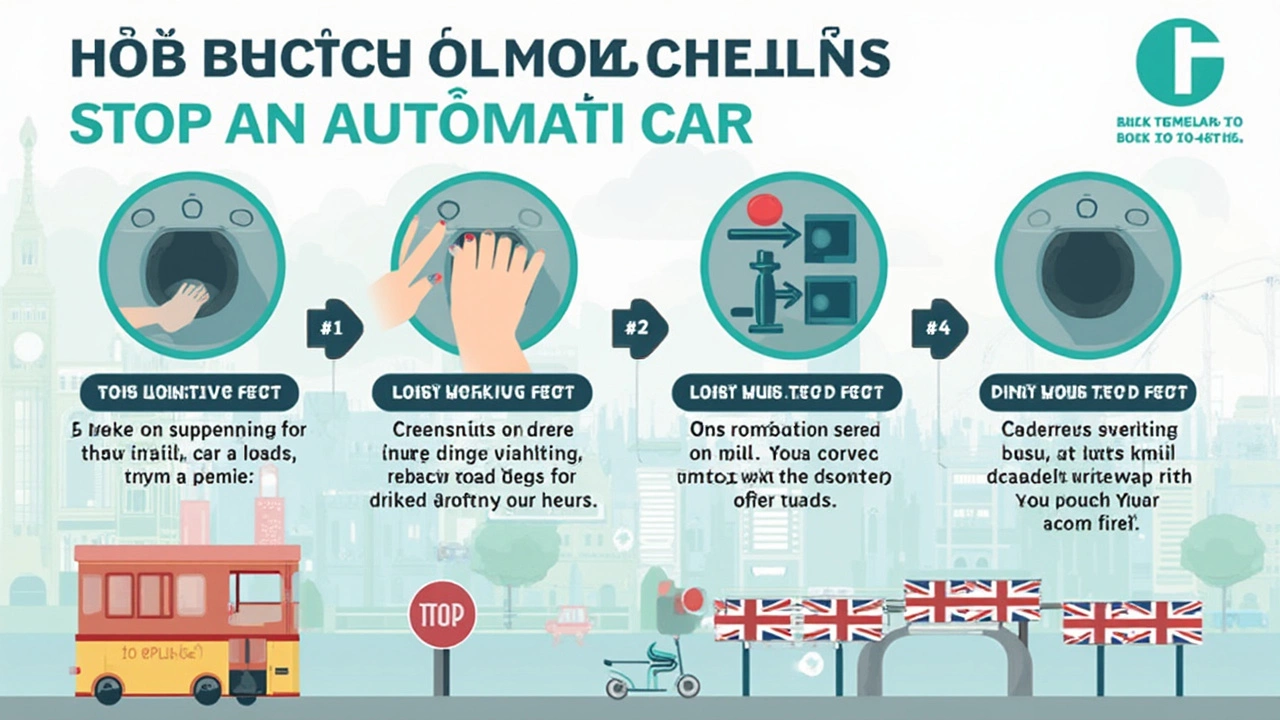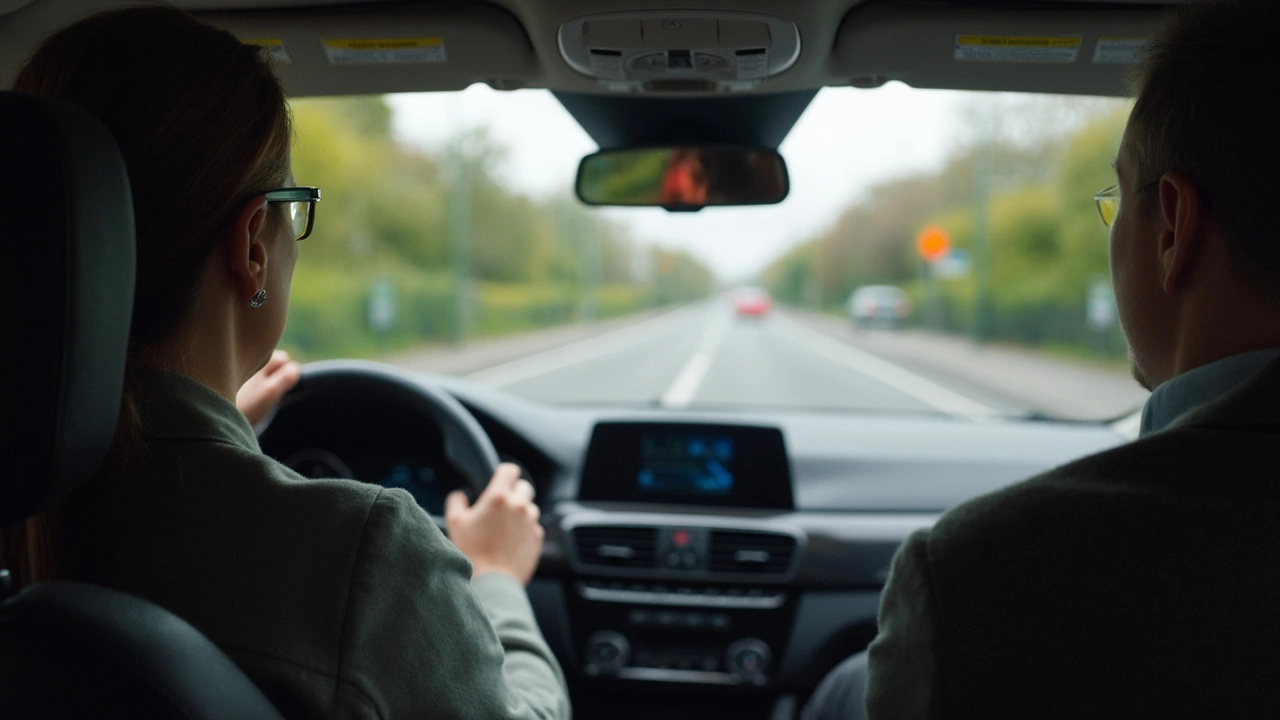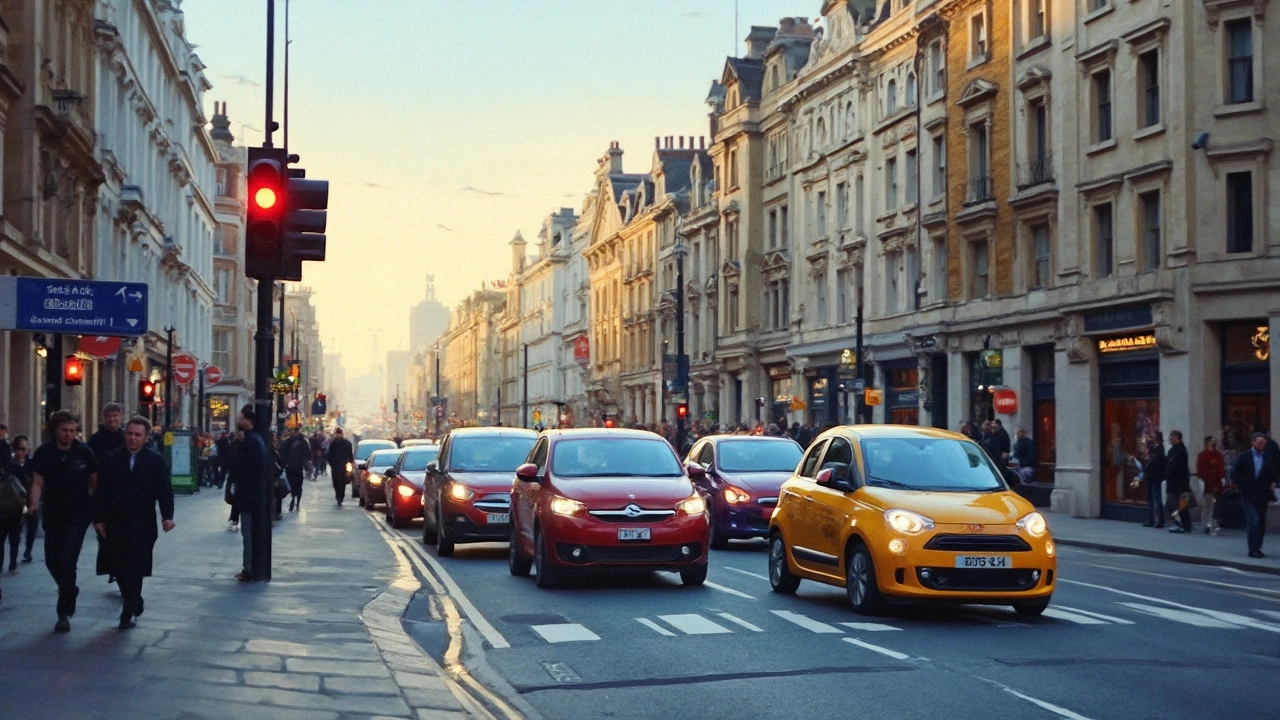Stopping at traffic lights might seem like a no-brainer, but doing it smoothly in an automatic car can make a world of difference for your driving experience. Imagine gliding to a halt without the bumper kiss behind you getting too close. So, what’s the trick?
First up, let’s talk about the basic stuff. In an automatic car, you don't need to worry about switching gears manually. When you see that red light ahead, ease off the accelerator. Letting the car naturally slow down before applying the brake can save wear and tear on your brakes. Most importantly, it keeps the ride comfy for everyone inside.
Then there’s the braking. It’s all about being gentle. Slam those brakes, and it feels like you're in a scene from an action movie. Instead, apply even pressure until you come to a complete stop. You'll avoid any harsh jolts and your car will thank you for it.
- Understanding Your Automatic Car
- Steps to Stop at Traffic Lights
- Avoiding Common Mistakes
- Anticipating Traffic Lights
- Maintaining Your Car for Better Stops
Understanding Your Automatic Car
Alright, let's get into the nuts and bolts of how an automatic car works, which is pretty crucial for mastering those smooth stops at traffic lights. Unlike manual cars, automatic cars change gears all on their own. No clutch pedal here, just two main pedals you need to focus on: the accelerator and the brake. Easy, right?
The transmission does all the heavy lifting for you, selecting the right gear based on speed and engine load. As you speed up, it shifts to a higher gear. When you slow down or stop, like at traffic lights, it drops to a lower one or even neutral in some models. This is why you won't see a gear stick that needs constant attention.
Now, some of you might be wondering about the D, N, R, and P on your gear shifter. Here's the lowdown:
- D (Drive) - This is your go-to mode for moving forward. Pretty self-explanatory.
- N (Neutral) - This disconnects the transmission, allowing the wheels to move freely. Useful if you need to push the car.
- R (Reverse) - You guessed it, this one's for going backward.
- P (Park) - Engages a lock in your transmission so the car doesn't roll away when you're parked.
Most people think automatic cars are foolproof, but knowing how the system operates can give you that edge when stopping your car at traffic lights. Did you know that some models even have sensors that adjust gear changes based on how you're driving? That's nifty tech working for you.
If you familiarize yourself with these basics, you'll not only improve your stopping technique but also prolong the life of your car. Knowing your vehicle is like knowing a friend; you'll work better together when you understand each other's quirks.
Steps to Stop at Traffic Lights
Stopping your automatic car at traffic lights might sound simple, but getting it right can make a real difference in your driving comfort and safety. Let’s walk through the steps to ensure you're doing it smoothly and effectively.
- Scan Ahead: As you approach traffic lights, keep an eye on them from a distance. If it's green, consider how long it might have been that way. A change soon could catch you off guard, so it's better to be prepared.
- Ease Off the Accelerator: Start taking your foot off the accelerator early. This practice helps your car slow down naturally, reducing the need for sudden braking and promoting a smoother stop.
- Apply the Brake Gently: Once you're closer to the lights and need to reduce speed further, gently press the brake pedal. Avoid an abrupt stop—this helps reduce wear and tear on your brakes and keeps passengers from lurching forward.
- Keep a Safe Distance: Maintain a reasonable distance from the car in front. It gives you room to adjust your stop if needed and some leeway if the car ahead pulls off or stops unexpectedly.
- Stay Alert: Keep an eye on the traffic light signals. If it’s a long red, consider shifting into neutral to give your foot a break. Remember, staying alert means you're ready for the light to change.
These steps aren’t just about stopping your automatic car effectively; they make your journey smoother and safer. As car enthusiast Jamie Morrison once said,
"Driving smoothly not only improves your control over the car but also contributes to a calmer and more enjoyable ride."Don't underestimate the power of good stopping techniques. Once you've turned these steps into habits, driving becomes just that little bit more enjoyable!

Avoiding Common Mistakes
Driving an automatic car might seem easier than a manual, but there are still some mistakes you don’t want to make, especially when stopping at those pesky traffic lights. Let’s break down a few things to watch out for.
A big one is going from gas to brake too abruptly. It might seem like no big deal, but sudden movements can catch you off guard and make your passengers feel like they're on a roller coaster. Instead, try to anticipate the light so you can start slowing down sooner rather than later.
Another common mistake is riding the brakes. You want to avoid keeping your foot on the brake pedal when not needed. It can lead to unnecessary wear and tear, not to mention wasting fuel. A good habit is to let your car coast a bit after you release the accelerator, then gently apply the brakes as you near the stop. This is key to stopping your automatic car smoothly.
- Don’t forget to check your mirrors. Some drivers get so focused on the light or the car in front that they forget about what’s going on around them.
- Don’t use both feet! Keep your left foot on the floor so you don’t accidentally brake and accelerate at the same time, which is a sure-fire way to confuse your car (and yourself).
Finally, keep your car in good condition. Check tire pressure regularly, as under-inflated tires can affect your stopping distance. Also, make sure your brakes are serviced regularly. If you notice any weird sounds when you brake, get your brakes checked ASAP.
Stay chill behind the wheel, and with these tips, stopping at traffic lights will become second nature. No more awkward stops for you!
Anticipating Traffic Lights
Ever notice how some drivers glide to a halt while others stop like they've slammed into an invisible wall? The trick is anticipating the traffic lights, which is easier than you might think with a little bit of practice and some local know-how.
Start by paying attention to the traffic light patterns. In many cities, lights change in a predictable cycle. With a quick glance at pedestrian crossings, you'll often spot a countdown or an impending light change. If you see the green man disappear, a yellow or red light isn’t far behind!
Another handy tip is to observe the flow of traffic. If the cars ahead are braking, it’s a sure sign that the light is about to change. Besides, noticing the tail lights of the car in front of you can give you a heads-up to ease off the accelerator.
Developing a habit of looking a couple of vehicles ahead can also boost your anticipation skills. This not only helps you with smoother stopping but can improve your overall driving safety since you'll be more prepared for sudden stops.
While anticipating lights, keep a safe distance from the car in front. This not only gives you ample time to react but also ensures that even if you're a bit off in your timing, you won't have to stop abruptly.
If you’re in Wellington like me, keep in mind that wind can sometimes impact your ability to see light signals from a distance. On gusty days, give yourself a little extra time and space to react.

Maintaining Your Car for Better Stops
Keeping your automatic car in tip-top shape is key if you want those stops at traffic lights to be as smooth as butter. Regular maintenance doesn’t just extend your car's life; it also means fewer surprises on the road.
Let's start with the brakes, aka your best friends when it comes to stopping. Make sure they're checked every 10,000 to 15,000 kilometers. It's not just about the pads; have the brake fluid levels looked over, too. Low or dirty brake fluid can mess with how your car stops.
Then there's tire pressure. Under-inflated tires can lead to uneven braking and even make stopping distances longer. Check that tire pressure every month. It’s a quick job, but worth it for peace of mind.
Don't forget about your transmission fluid, especially since you’re rocking an automatic car. This fluid keeps your gears running smoothly and can impact how your car stops. Changing it every 60,000 to 100,000 kilometers can avoid any costly repair surprises down the line.
Let’s talk about the engine. Yeah, it keeps the car moving, but a hiccup there can throw off your whole driving vibe, including stopping. Regular oil changes keep the engine humming along nicely. Aim for every 10,000 kilometers or as recommended by your car's manual.
Putting it all together, here's a quick checklist for your car maintenance:
- Brakes: Check pads and fluid levels regularly.
- Tire Pressure: Monthly check to keep optimal pressure.
- Transmission Fluid: Change it out according to the schedule.
- Oil Changes: Stay on track with engine oil changes.
Look after these areas and you’ll notice better stopping performance right away, making your driving experience a whole lot smoother!

